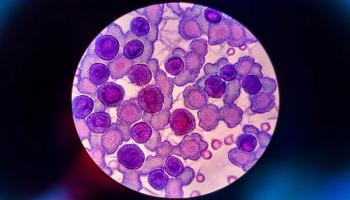
- September 2018 Immunization
- Volume 84
- Issue 9
Study: Use of Generic Combination Drugs Could Have Drastically Reduced Medicare Spending
Spending for the 10 most expensive brand name combination drugs could have been reduced by an estimated $2.7 billion between 2011 and 2016 if lower-cost generics had been prescribed, according to researchers.
Spending for the 10 most expensive brand name combination drugs could have been reduced by an estimated $2.7 billion between 2011 and 2016 if lower-cost generics had been prescribed, according to researchers from Brigham and Women’s Hospital and Harvard Medical School.
In 2016 alone, $925 million may have potentially been saved in Medicare if generic medications were used in place of their more expensive brand-name counterparts, according to the study.
The findings, published in JAMA, were part of a retrospective analysis of Medicare Part D expenditures that examined the potential cost savings if generic substitution was utilized.
For the analysis, researchers used the Medicare Part D Prescription Drug Event data set, which represents reported drug expenditures for approximately 70% of beneficiaries enrolled in the Medicare drug benefit plan from 2011 to 2016.
Twenty-nine oral brand name fixed-dose combination medications were selected from the 1500 medications that accounted for the highest total spending reported by Medicare in 2015. The drugs were divided in 3 mutually exclusive categories: constituents available as generic medications at identical doses, at different doses, and therapeutically equivalent generic substitutes. Represented therapeutic areas included cardiovascular, pain, neurological, endocrine, infectious disease, urological, and gastrointestinal.
In 2016, the 20 brand name drugs with generic counterparts available at identical doses accounted for $303 million in estimated spending, the 3 brand name drugs with generics available at a different doses accounted for $232 million in estimated spending, and the 6 brand name drugs with therapeutically equivalent generic substitutes accounted for $491 million in estimated spending.
By estimating the difference between the amount spent on the brand name combination products and the prices of generic drugs used for the same number of doses, the researchers estimated that $925 million could have been saved in 2016. This includes $235 million in savings if generic products had been prescribed at the same doses, $219 million using generic substitution at different doses, and $471 million from substitution of similar generic medications in the same therapeutic class.
Overall, cumulative spending by Medicare for the 10 costliest brand name combination medications in 2015 available during the study period exceeded $2.9 billion between 2011 and 2016. In total, generic utilization could have reduced spending by an estimated $2.7 billion during this time period, according to the study.
Previous reports have also highlighted the trend of the rising cost burden on the health care system. A recent study published in the Journal of the American Geriatrics Society pointed to a steady increase in federal spend and out-of-pocket costs for some of the most expensive medications in the Medicare Part D program. Unless addressed, the study authors projected $40 billion in annual spending by the end of 2020 for the medications.
Additionally, a report released by the IQVIA Institute noted that specialty medications are rapidly approaching half of overall medicine spending. Brand name drugs comprise most of US drug spending, with many of these therapies coming from the specialty space. Increased access and utilization of generic therapies can help drive down spending for costly therapeutics overall.
“Promoting generic substitution and therapeutic interchange through prescriber education and more rational substitution policies may offer important opportunities to achieve substantial savings in the Medicare benefit program,” the researchers concluded.
This article was originally published at
References
Sacks CA, Lee CC, Kesselheim AS, et al. Medicare spending on brand-name combination medications vs their generic constituents. JAMA. 2018. Doi: 10.1001/jama.2018.11439
Articles in this issue
about 7 years ago
The Waiting Is the Hardest Partabout 7 years ago
New and Novel HIV Medicationsabout 7 years ago
Self-Care for Respiratory Issuesabout 7 years ago
States Continue to Expand Availability of Telehealthabout 7 years ago
Educating Patients About the Dangers of Sharing Rx Medicationsabout 7 years ago
When Complying With a Law Enforcement Request Causes ProblemsNewsletter
Stay informed on drug updates, treatment guidelines, and pharmacy practice trends—subscribe to Pharmacy Times for weekly clinical insights.












































































































































































































